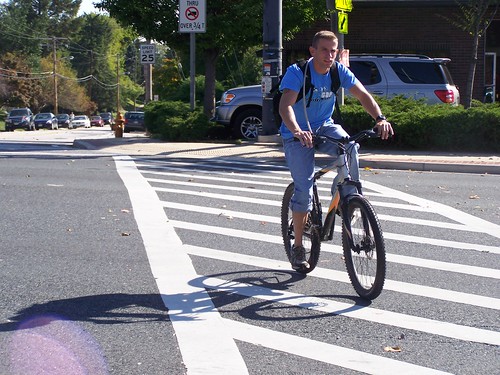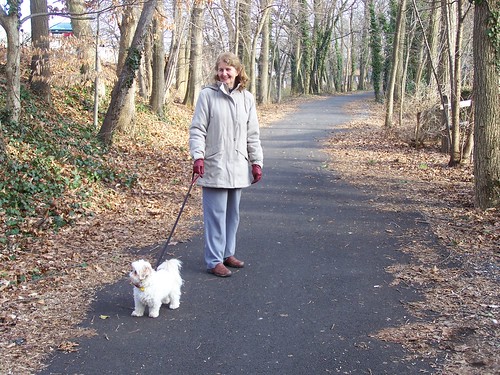Something to add to my resume: Baltimore County rated 6th in the nation for its Complete Streets policies
... too many entries on bicycling, I know. "What should a US national bike strategy look like?" is a good sum up with links to other writings.
 According to a citation in a recent GGW blog entry, "Baltimore County [Maryland] has been recognized as a national leader for Complete Streets, ranking 6th among 83 communities in the US with Complete Streets programs" according to the report The Best Complete Streets Policies of 2013 from Smart Growth America.
According to a citation in a recent GGW blog entry, "Baltimore County [Maryland] has been recognized as a national leader for Complete Streets, ranking 6th among 83 communities in the US with Complete Streets programs" according to the report The Best Complete Streets Policies of 2013 from Smart Growth America.I seem to recall seeing that now that I think about it, but I guess it didn't register.
That ranking is not 100% due to me, but it's a great deal me, more than 50%.
Because in large part it is built upon the hard core recommendations built into the Western Baltimore County Pedestrian and Bicycle Access Plan, for which I was the project manager and chief author ("Best practice bicycle planning for suburban settings using the action planning method").
That being said:
1. The plan built on previous pro-walking and biking initiatives in Western Baltimore County, various workshops and planning iterations, the efforts of Kit Valentine and Catonsville Rails to Trails, and interactions with various government agency staff and citizens;
 2. The Eastern County Plan which preceded the Western County Plan by a few years (about which citizens complained to me that "nothing was done with it"--this led to my reorganizing the Western Plan in ways to foster implementation and make it harder to ignore);
2. The Eastern County Plan which preceded the Western County Plan by a few years (about which citizens complained to me that "nothing was done with it"--this led to my reorganizing the Western Plan in ways to foster implementation and make it harder to ignore);3. Review of other plans (such as for the City of Los Angeles, which is where I drew the recommendations about reshaping the capital improvements planning and budgeting process with regard to sustainable transportation)
4. The change in the composition of the County Council and the County Executive in the November 2010 elections, when the eight elected leaders shifted from neutral to positive with regard to bicycle and pedestrian matters;
5. And how advocates, led by BikeMaryland, lobbied two newly elected Councilmembers, Tom Quirk (District 1) and David Marks (District 5) to put forward legislation "creating a Pedestrian and Bicycle Advisory Committee" for the County. (The legislation is mis-titled, it's actually a set of new regulations concerning bicycle and pedestrian planning and infrastructure development, including the creation of said committee.)
Passage of the law in February 2011 came almost two years before the plan I wrote was actually approved as an amendment to the County Master Plan.
-----
A couple things.
1. One of the provisions of the draft that was excised was the creation of subcommittees of the County wide Advisory Committee for each of the Council Districts (there are seven). That was to create a committee of knowledge and committed citizens focused on pushing for improvements in their communities, to push the county agencies. I lobbied for that to be put back into the legislation and it was.
 2. But it was optional, at the discretion of the Councilmember. Only District 5 Councilman David Marks has followed through with this, and so it should be no surprise that District 5 is now ahead of the other districts in getting bike and pedestrian projects moved forward ("Committee seeks state grant to help create Towson 'Bike Beltway'," Baltimore Sun).
2. But it was optional, at the discretion of the Councilmember. Only District 5 Councilman David Marks has followed through with this, and so it should be no surprise that District 5 is now ahead of the other districts in getting bike and pedestrian projects moved forward ("Committee seeks state grant to help create Towson 'Bike Beltway'," Baltimore Sun).3. Another thing I didn't anticipate when writing the recommendations was that the County Executive, who appoints the chair of the committee, could appoint a County Government employee as chair. County Employees work for the County Executive, and this creates a conflict over independence that is ultimately unrectifiable. If I write another bike and ped plan, likely I would include a provision to prevent such a conflict. (Although it could excised as well...)
4. It's an illustration of the importance of plans, because when circumstances change, you can take advantage of the changes and plans can be a great source for shaping those changes.
 5. On the other hand, a plan isn't enough. You need organized advocates, and legislators and other stakeholders willing to take chances and lead and make changes. Without the advocates and legislators "to close the circle" that plan would have just sat on the shelf, like the Eastern County Plan.
5. On the other hand, a plan isn't enough. You need organized advocates, and legislators and other stakeholders willing to take chances and lead and make changes. Without the advocates and legislators "to close the circle" that plan would have just sat on the shelf, like the Eastern County Plan.6. That being said, a plan or the passage of an ordinance isn't "the end" but the beginning of implementation.
Labels: bicycling, car culture and automobility, change-innovation-transformation, civic engagement, electoral politics and influence, social change, sustainable transportation, transportation planning



0 Comments:
Post a Comment
<< Home